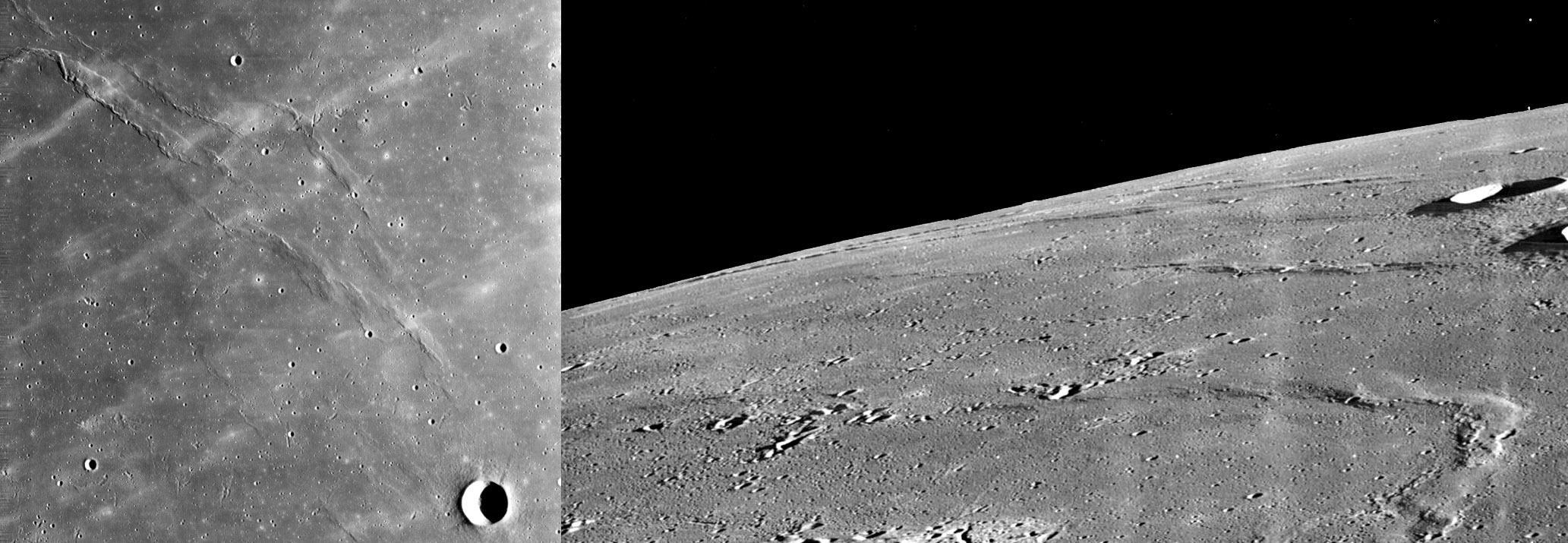May 26, 2018
The Great Wall of Procellarum
Originally published February 4, 2009

left: Lunar Orbiter IV -162 h2 image from the LPI Lunar Orbiter Photo Gallery and right: Lunar Orbiter III image 3214 Medium also from LPI Lunar Orbiter Photo Gallery
Did you notice the low ridges near the horizon of yesterday's LPOD? That was almost a surface view of the fronts of a series of parallel mare ridges. Repeated from yesterday is the same LO 3 image, seen a little closer, with a LO 4 view to show the same area from overhead. The ridges (unnamed as are many in Procellarum) extend to the northwest from Galilaei A (bottom right of left image and right-center of right image). The steepness of the mare ridges is indicated by the small shadows they cast. This illustrates that mare ridges are not simply very low angle swells. Many mare ridges have two components - a broad gentle swell and a narrow, steeper rope-like ridge crest. Mare ridges are now known to be low angle thrust faults - meaning that one slab of mare lava rides up over what it used to be adjacent to. I don't know if the rope is simply the edge of the tilted slab or if there is a more complex origin. By the way, there is a higher res, closer view of these ridges (but it is uglier). And I was forced to use the LO 4 view because there seems to be no wonderful low Sun amateur image. Who says everything on the Moon is already imaged?
Chuck Wood
UPDATE
BBC now has two programs about the Moon, with some of my comments in both. Programme 2 is an updated version of the one on Lunar Transient Phenomena including a new quote from me near the end.
Related Links
Rükl plate 28
Yesterday's LPOD: 3 Billion Years Too Late
Tomorrow's LPOD: Highway Interruptus
COMMENTS?
Click the Discussion tab above.
COMMENTS?
Register, Log in, and join in the comments.



